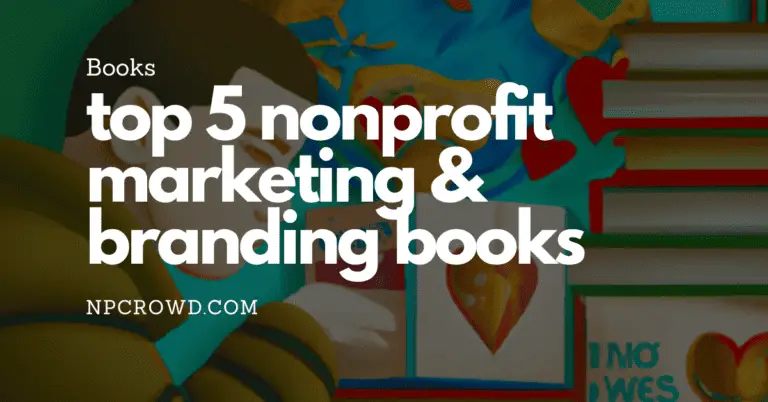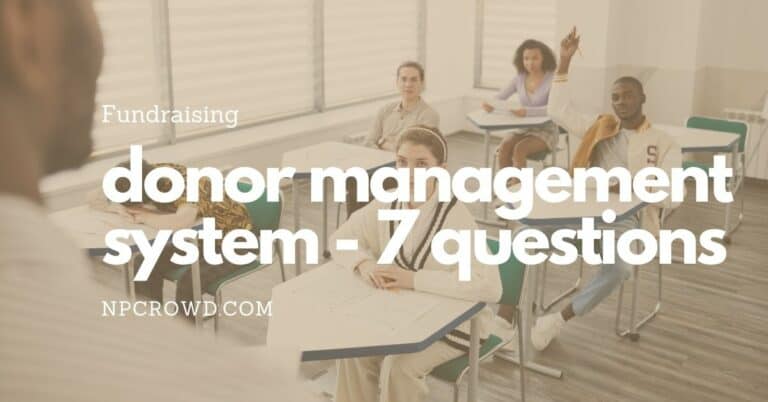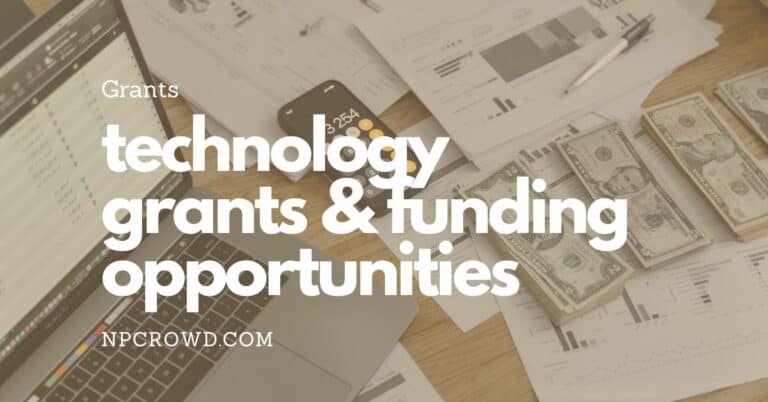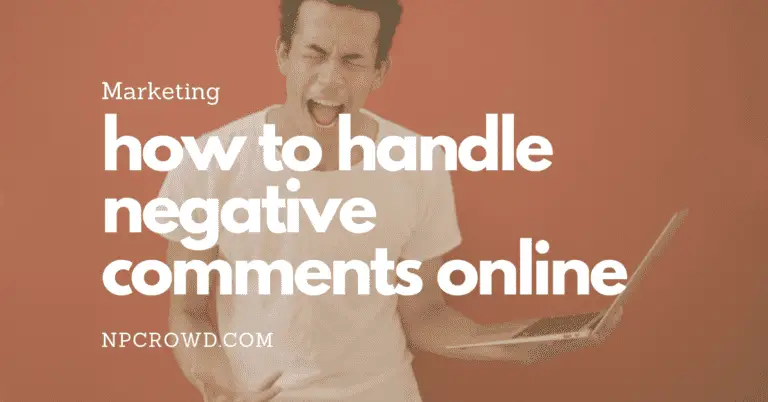5 Questions to Ask Before Launching Your Social Media Campaign: Nonprofit Edition
Disclaimer: This post may contain affiliate links. These links, if used and purchases made, we may earn a small commission. These affiliate programs do not impact the recommendations we make or the resources we refer you to. Our focus is on providing you the best resources for your nonprofit journey.
Social media campaigns are a great way to engage with your constituents, participants, or a new audience, but they can also be time-consuming and expensive. Whether the goal of your social media campaign is fundraising, awareness building, recruiting, or program enrollments, you need a plan.That’s where creating a plan and asking the right questions help predict success. Just because your campaign is for a nonprofit does not mean you should wing it. Create a professional campaign to get the results you want.
Don’t forget to ensure your website development is up to the task using design driven development.
Before you launch a new campaign, here are five questions that will help guide the process.
What is the goal of your campaign?
This is a great place to start because without a clear goal, it’s hard to determine what success looks like. This comes down to “why are you launching this campaign?”
For example, if you are trying to grow your email list from 500 subscribers to 1000 and it costs $100 in advertising per month for six months, and the campaign only grows the list by 200 people, then it has not been successful.
This question will help determine your organization’s focus on marketing efforts and what metrics matter most for measuring campaign results.
If the goal of your campaign is to bring awareness to your cause, the goal is to have people talk about it. In this case, success might be measured by how many media mentions you get in a month or year.
When launching a fundraising campaign on social media, your goals may include how many new donors you get along with how much money is raised.
Who are you targeting?
Identify your target audience and what they want to see from you.
If you want to reach an audience on social media, start by analyzing your existing donor or participant base. What service(s) do they use the most? Where are they located? And what type of social media channels are their favorite?
Think about the types of people who will be most interested in the work you do. For example, if it is a nonprofit organization that helps children with special needs, maybe their parents are more likely to share content on social media than someone without kids–maybe these same parents need information or resources but may not know where to find them.
If you’re targeting adults, like say for our hypothetical charity again, then some questions might become “
Perhaps you are targeting college students, then the questions might be “who is on campus?” (maybe its professors) or “what are people talking about right now?”.
By defining your audience well, you can target your campaign more specifically rather than relying on a broad message that does not resonate well with any particular audience.
When are the best times to engage your audience?
Timing is important. And it’s especially true for social media advertising. Whether you are launching a one-time or an ongoing campaign, know the best time of day, day of the week, or even time of year to launch your campaign.
Timing is crucial for any social media campaign, but there are multiple reasons that can be time-sensitive.
If your nonprofit has upcoming promotions on other channels, it might not be a bad idea to use them as an opportunity to launch your promotional campaign.
However, it’s also important to know that launching a campaign during heavy traffic periods can backfire. If you are running an ongoing social media campaign and want it to reach the maximum number of people possible, then you should launch your campaigns in between these high-traffic times.
Another time factor is knowing when your audience is most likely engaged with their devices or other digital platforms. It’s best practice for organizations on social media to post at least once per day, but there are many exceptions depending on the type of charity and market size.
We have researched the best times to post on social media. Many reputable sources, including Hootsuite, CoSchedule, and more, say different things, but we studied them and found the best times. (All times are EST. Use local timezones for local nonprofit audiences)
| Platform | Overall | To Corporations | To Constituents |
|---|---|---|---|
| 9a, 11a-12p Thu-Sun | 9a-2p Tue-Thu | 12p Mon-Wed | |
| 7:45p, 10:45p, 12:45p, and 5:45p | Tue-Wed (Wed being best) | Mon, Wed | |
| 12p, 3p, 5-6p | 9a, 4p on Mon / Thu | 12p-1p Mon-Wed | |
| 5a-8am, 12p, 5-8p Mon, Wed-Fri | 12p-1p, 5p-6p, 8p-9p on Mon-Fri | 10a, 4p on | |
| 8p-11p Mon-Fri | 10a-1p, 8p-10p Wed-Fri | 8p-11p Thu-Sun |
How will you measure success?
One of the most common questions asked when helping nonprofits with their social media campaigns is, “How do I know if it’s working”?
This question has a lot of answers, and they’re all important. Here are some things you might look for while deciding whether your campaign or content is successful:
- Increase in Likes/Shares per Post on Social Media Platforms (Facebook likes, Twitter retweets)
- Increased Website Traffic From Campaign Page
- Increased Email Subscribers
- Purchases/Donations Made Online Via Campaign Landing Pages
- More Donations Since Launch Of New Activity
One thing that will always be true is this–if you don’t know what you want to measure, then there’s no way of knowing if your campaign is successful. Define success and measure against it.
What are the risks, and how can they be mitigated?
You might ask what risks there could be with a social media campaign. There are a few.
First, there is the risk of an unsuccessful campaign. Failure can result from forgetting to set goals and measures from the beginning. (See #3 above) Your organization could spend hundreds or thousands on a campaign and not raise more funds or grow your prospective donor list. This expenditure would be a wasted effort if nothing were learned.
The risks of a social media engagement campaign are, well, perhaps even higher than those of a traditional marketing or fundraising campaign. This is because it can reach many more people who may not like your organization and its work.
It’s important to take steps ahead of time so that you can mitigate these risks–and still have an effective campaign! Here are some things you might want to consider:
- Set parameters for what employees will be able to post on behalf of the nonprofit. Think about establishing a social media policy.
Hiring remote staff who live in other cities where there is less competition from nonprofits working nearby (sometimes this strategy goes hand-in-hand with setting clear boundaries) - Ensuring internal communications about the project across all departments within the nonprofit with talking points available.
- Determining how to measure the campaign’s success and what metrics will be used for this purpose in advance before it begins.
- Know ahead of time how to deal with negative comments on social media.
How much time do we have to dedicate to this project before and after it launches?
Most teams underestimate the time and effort a good social media campaign requires. It goes beyond sneaking in the needed work between items on an already full plate. Instead, time should be dedicated to the work.
Before the campaign launches:
- define the audience
- set measurable success goals
- create a brief that includes vocabulary, slogans, and facts
- pre-create graphic/video assets that will be used
Then turn your time and attention to the following items on a daily/weekly basis:
- track success measurements and make adjustments to the campaign
- scheduling of posts specific to each channel
- interact with post engagements/comments
On average, a decent social media campaign will require at least 10 hours of work per week.
Some can dedicate their full attention to a project like this, and there are others that would be better suited for less intensive projects. It is important to identify which type you fall into before launching your new social media engagement campaign.
Do I need any additional resources or support for this project?
The campaign’s success depends greatly on how much time, energy, effort, creativity, and money available to use. If an organization cannot internally provide these types of resources, it should consider partnering with outside agencies who specialize in marketing (social media included) to ensure success.
Ideally, organizations would have at least four months before launching their next marketing project. If more frequently, you may need resources outside your organization.
When it comes to getting help with your social media campaigns, you could look at hiring a nonprofit social media consultant from the NPCrowd directory. Depending on the type of help needed, you could look at hiring an intern from a local college to assist your team.
Finally, look at local marketing or media companies. You may find they have an affinity for your charity’s mission and provide services at a discounted rate. Others may provide additional advertising, like billboards, banner ads, or other services, at no cost.
Why Should Nonprofits Use Social Media?
Social media platforms allow nonprofit organizations to tell their story in remarkable ways and engage current and new supporters. Posts can also increase brand awareness, promote fundraising initiatives, solicit volunteers, or, if the trends of 2020 are believed, may even help bring about social changes in the future.
Leveraging these platforms in an efficient and cost-effective manner will bring dividends to your organization. Start by asking the five questions above and ask for help when you need it.
Final Thoughts
Ok, you’ve figured out your goal for the campaign. You know who it’s geared towards and how success will be measured. Great! But don’t forget these five questions before launch day arrives.
I want to share some of the things I ask myself when launching a new social media engagement campaign to ensure that we meet our goals and have fun while doing so!
Above are five questions I make sure to answer beforehand (though they’re not necessarily sequential). Be sure to write down yours as well in preparation for your next social media campaign!







